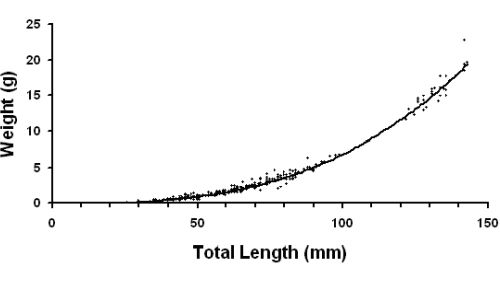Silver Shiner Size-Class Structure, Habitat Utilization, Movement and Persistence in an Urbanized Fragment of a Great Lakes Tributary
This project was made possible with assistance from the OMNR SARSF Fund
Abstract
Silver Shiners (Notropis photogenis) were monitored with underwater
videography, captured and measured, and their habitat was characterized from 38 locations
in an urbanized fragment of the Grand River, Ontario, from 2006 to 2015. Cobble was the
most frequently used substrate type (44.6% of observations) in heterogeneous transitional
habitat near backwater pools and areas adjacent to deep runs. Population size structure and
qualitative growth patterns suggested rapid growth during the first 2 y after hatching (n ¼
439). The largest fish captured was 143 mm total length, which is a new Canadian record and
tied the world record from Tennessee. Spawning was not directly observed, but gamete
evidence suggested it took place from early to mid-June when the water temperature was
approximately 24 C. Underwater video monitoring revealed schools of Silver Shiners
migrating upstream during late afternoon and evening in October/November presumably to
overwintering areas. Silver Shiners were located near known sources of groundwater seepage
in 92% of observations. This association requires further investigation to determine if
groundwater represents critical habitat that facilitates persistence of Silver Shiner populations
in urbanized rivers with notoriously poor water quality.
Fall Silver Shiner migration to over-wintering habitat- Grand River, Ontario







